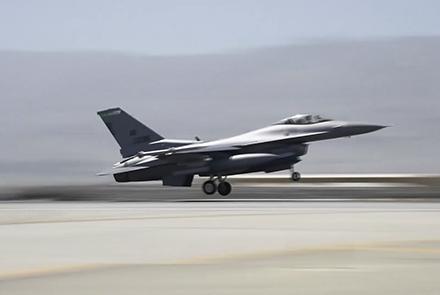Statistics by the United States Air Force show that 4,300 bombes have been dropped by foreign troops in Afghanistan in 2017, targeting Taliban and other terrorist groups in parts of the country.
According to the US Air Force figures, the number of airstrikes in 2017 was twice than of those carried out in the past two years – 2015 and 2016.
US Air Force also has said this year they will bring in more airplanes to Afghanistan and will increase their support to the Afghan security forces on the battlefields.
According to the figures, US and Afghan Air Force have conducted an average of 15 airstrikes daily in 2017 in south of Afghanistan.
The Resolute Support Mission in Afghanistan said following the announcement of Donald Trump’s new strategy for South-Asia and Afghanistan, the number of airstrikes against insurgents has increased significantly.
“Airstrikes are up significantly in 2017 primarily due to the South Asia policy which President Trump has signed and allowing us to go after both the Taliban and ISSK (Daesh) where they are. It is going to allow us to pursue them. The rules of engagement are now different,” Resolute Support Mission (RS) Public Affairs Director Thomas Gresback said.
In the meantime, NATO Secretary General Jens Stoltenberg has said that NATO will send in another 3,000 military trainers to Afghanistan to train Afghan forces.
Stoltenberg said the international community will not let Afghanistan to turn to a safe haven for insurgents.
“Allies and partners are also adding three thousand more trainers to the Resolute Support mission in Afghanistan, helping prevent Afghanistan from ever again becoming a safe haven for international terrorism. Afghanistan has taught us that prevention is better than intervention,” said Stoltenberg.
Afghan Defense Ministry meanwhile said the Afghan Air Force has changed their tactics and that they are carrying out airstrikes with a new approach to eliminate terrorists.
“We have increased our attacks and also we succeeded to eliminate a great number of the enemy's strongholds, equipment and personnel by operations carried out by air and ground forces,” Defense Ministry deputy spokesman Mohammad Radmanish said.
“There will be significant results if these (military) operations are conducted in good coordination,” former military officer Gen. Ahmad Shah Sangdil said.
The new remarks about the increase of airstrikes and sending in more advisers and trainers expressed amid currently over 20 provinces of the country are insecure and nearly 14 districts in different locations have collapsed to the Taliban.
In addition to this, recently Taliban has advanced toward Farah city fighting against Afghan security forces. Despite ongoing fights in Farah city outskirts, fights also have been ongoing in parts of Kunduz province.


